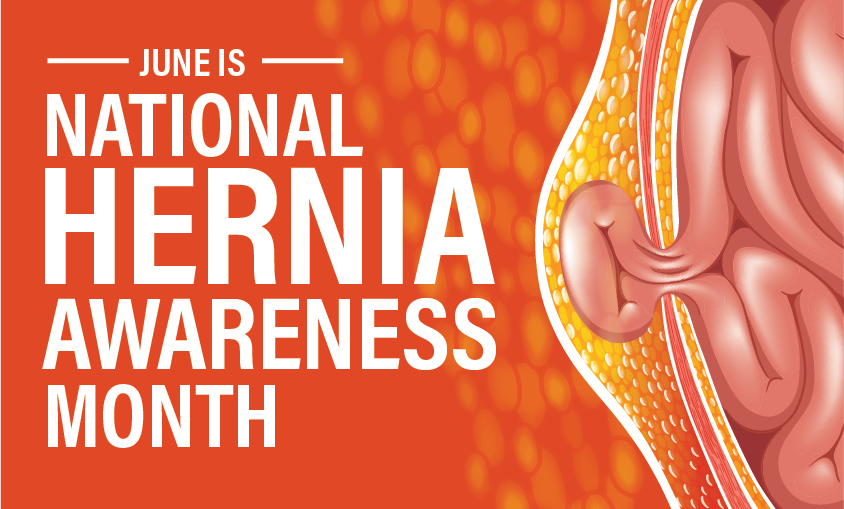A hernia is when a part of an organ or tissue bulges through a weakened area or muscle or connective tissue. There are different types of hernias depending on where they occur:
- Inguinal hernia is in the groin area and is the most common type of hernia
- Umbilical hernia occurs around the belly button
- Incisional hernia occurs through a scar
- Hiatal hernia occurs through a small opening in the diaphragm that pushes part of the stomach up into the chest
Hernias can happen to any gender and at any age. Some contributing factors could be muscle weakness or heavy lifting and straining. Risk factors for hernias include being male (men are eight times more likely to develop an inguinal hernia than women), older age (muscles weaken as you get older), family history, chronic cough, chronic constipation, pregnancy, or previous hernia or hernia repair.
How common are hernias?
Of all hernias that occur:
- 75 to 80% are inguinal or femoral.
- 2% are incisional or ventral.
- 3 to 10% are umbilical, affecting 10 to 20% of newborns; most close by themselves by 5 years of age.
- 1 to 3% are other types.
How is a hernia treated?
Hernias usually do not get better on their own, and surgery may be the only way to repair them. However, your doctor will recommend the best therapy to address your hernia, and may refer you to a surgeon. If the surgeon thinks it is necessary to repair your hernia, then the surgeon will tailor the method of repair that best meets your needs.
In the case of an umbilical hernia in a child, surgery may be recommended if the hernia is large or if it has not healed by the age of 4 to 5 years old. By this age, a child can usually avoid surgical complications.
If an adult has an umbilical hernia, surgery is usually recommended because the condition will not likely improve on its own and the risk of complications is higher.
One of three types of hernia surgery can be performed:
- Open surgery, in which a cut is made into the body at the location of the hernia. The protruding tissue is set back in place and the weakened muscle wall is stitched back together. Sometimes a type of mesh is implanted in the area to provide extra support.
- Laparoscopic surgery involves the same type of repairs. However, instead of a cut to the outside of the abdomen or groin, tiny incisions are made to allow for the insertion of surgical tools to complete the procedure.
- Robotic hernia repair, like laparoscopic surgery, uses a laparoscope, and is performed with small incisions. With robotic surgery, the surgeon is seated at a console in the operating room, and handles the surgical instruments from the console. While robotic surgery can be used for some smaller hernias, or weak areas, it can now also be used to reconstruct the abdominal wall.
Each type of surgery has its advantages and disadvantages. The best approach will be decided by the patient’s surgeon.
An untreated hernia can cause pain and health issues. The most common complications of abdominal wall hernias are bowel obstructions, incarcerations, and strangulation of the bowel. These complications are often detected by clinical evaluation and present with symptoms such as a visible bulge (often more prominent when you cough or stain), a burning or aching sensation abdominal pain, vomiting, and/or abdominal distention.
You can practice prevention strategies that may lower your chance to get a hernia by maintaining a healthy weight, eating a high fiber diet, avoiding heavy lifting, and stop smoking.
Disclaimer: Health experts suggest that you talk to your doctor before you start, change or modify your medications, lifestyle or current treatment regimen.
References:
https://my.clevelandclinic.org/health/diseases/15757-hernia
Mayo Clinic. (2019.) Inguinal hernia. Retrieved from https://www.mayoclinic.org/diseases-conditions/inguinal-hernia/symptoms-causes/syc-20351547
MedlinePlus. (2017). Hernia. Retrieved from https://medlineplus.gov/hernia.html

